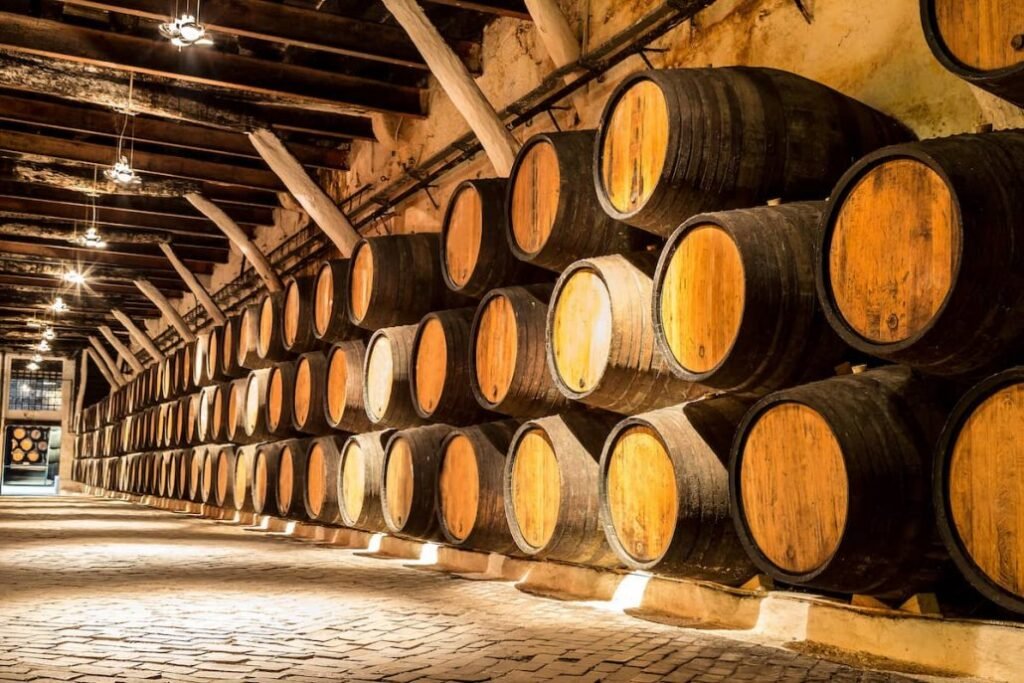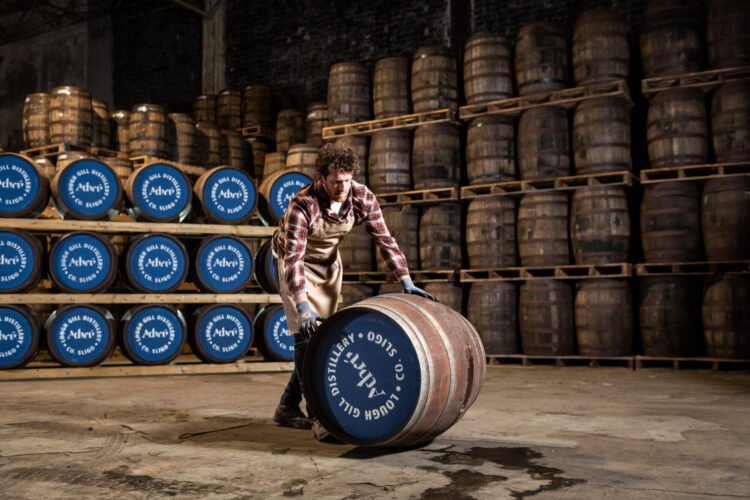Aging whiskey is a delicate, complex process that shapes the final flavor profile of the spirit. While many factors contribute to the development of a whiskey’s character, one of the most influential elements is the cask in which it’s aged. The type of barrel, its history, and the cask finish all play a critical role in the aging process, imparting a variety of flavors that make each whiskey unique. Understanding the role of casks in whiskey aging can enhance your appreciation for the complexity and depth that comes from this time-honored tradition.
In this article, we will delve into the significance of different cask types, how they impact the aging process and the whiskey’s profile, and highlight notable examples of whiskies aged in these various casks.
The Aging Process: How Casks Shape Whiskey
When whiskey is distilled, it is essentially a clear, high-proof spirit. The true magic of whiskey happens when it’s put into a cask for aging, often for years or even decades. The wooden cask provides an environment where the spirit undergoes chemical reactions with the wood, interacting with the air and temperature fluctuations. These reactions result in changes to the flavor, texture, and color of the whiskey.
The primary role of the cask is to allow the whiskey to breathe, creating an exchange of gases between the liquid and the air. This process, known as oxidation, leads to the development of flavors. Over time, the whiskey absorbs flavors from the wood itself, which can range from subtle vanilla and caramel to bolder notes like spices and smokiness.
Furthermore, the type of wood used in the cask also influences the whiskey’s profile. Oak is the most common wood used for whiskey casks, but there are many varieties of oak, such as American oak and European oak, which contribute different characteristics to the final product.
The Role of Oak Casks in Whiskey Aging
Oak barrels are the most common vessels used in whiskey aging because oak has certain properties that make it ideal for the process. It is strong, porous, and contains compounds that can enhance the whiskey’s flavor profile. The wood’s natural sugars, such as lignin and hemicellulose, can impart sweetness and rich flavors. Oak also allows for the slow oxidation of the whiskey, which helps to mellow its harsh edges over time.
American Oak
American oak (Quercus alba) is a favorite for aging whiskey, particularly for bourbon and American rye. It imparts bold, sweet flavors such as vanilla, caramel, coconut, and even hints of dill or mint. American oak casks are generally more porous than European oak, allowing the whiskey to interact with the wood more intensely, which accelerates the aging process and results in more pronounced flavors.
American oak is often charred before it is used to age whiskey. The charring process caramelizes the sugars inside the wood, adding even more sweetness and depth to the whiskey. Bourbon, in particular, is required by law to be aged in new charred oak barrels, which gives it its signature vanilla, caramel, and oaky flavors.
Notable examples of whiskies aged in American oak barrels include:
- Buffalo Trace Bourbon: A Kentucky bourbon that showcases the rich vanilla, caramel, and oak notes typical of American oak-aged spirits.
- Woodford Reserve Kentucky Straight Bourbon: A smooth, balanced bourbon with deep caramel and spice notes, thanks to American oak maturation.
European Oak
European oak (Quercus robur) is less porous than American oak and is known for imparting more tannins to the whiskey, resulting in a drier, more robust profile. Whiskies aged in European oak often exhibit flavors like dried fruit, spice, leather, and earthy notes. European oak barrels are traditionally used for aging Scotch whisky and some Irish whiskies.
One of the key differences between European oak and American oak is the influence of tannins. While American oak adds a sweeter, more approachable character to the whiskey, European oak tends to add complexity, structure, and more subtle spice, which makes it especially suitable for whisky that needs time to develop depth and complexity.
Notable whiskies aged in European oak barrels include:
- GlenDronach 12-Year-Old: This Highland Scotch whisky is aged in European oak sherry casks, imparting rich sherry sweetness and dark fruit notes that balance its deep oakiness.
- Macallan 12-Year-Old Sherry Oak: A beloved Speyside whisky, the Macallan 12-Year-Old is matured in European oak sherry casks, contributing complex flavors of dried fruits, spice, and chocolate.

Cask Finishes: The Impact of Secondary Aging
In addition to the primary aging process in oak barrels, many distilleries utilize cask finishes, a technique where whiskey is transferred into a different type of barrel after its initial aging period. This secondary aging process allows the whiskey to take on additional flavors from the new cask, further enhancing its profile. Cask finishing is often used to create unique and complex flavor combinations, giving distillers more creative freedom.
Sherry Casks
Sherry casks, often from Spain, are used to age whiskey for an additional layer of flavor. Sherry casks impart a rich, sweet, and fruity flavor profile to the whiskey, with notes of dried fruit, nuts, and spices. This finish is particularly popular in Scotch whisky, especially in Speyside and Highland regions.
Sherry cask finishes are most common with whiskies aged for longer periods, as the interaction between the whiskey and the wood is more gradual and nuanced. Sherry cask finishes often lend depth and richness, as well as a luxurious mouthfeel.
Notable examples of whiskies with sherry cask finishes include:
- Aberlour A’Bunadh: A cask strength, non-age statement Scotch that is aged in a combination of American oak and sherry casks, offering bold flavors of dried fruits, nuts, and spices.
- Glenfiddich 21-Year-Old Reserva Rum Cask Finish: A Glenfiddich expression that incorporates a rum cask finish, adding layers of sweetness and spice.
Wine Casks
Wine cask finishes are becoming increasingly popular for creating whiskies with fruity, complex profiles. Casks that previously held red or white wine impart distinct flavors that can range from berry fruits and floral notes to earthy undertones. Wine cask finishes are often used with more delicate or aged whiskies to add a layer of sophistication.
Notable examples of wine cask finished whiskies include:
- Glenmorangie Nectar D’Or: A single malt Scotch aged in former Sauternes wine casks, giving it an elegant sweetness and flavors of honey, fruit, and vanilla.
- Balvenie DoubleWood 17-Year-Old: A blend of American oak and European sherry casks, giving this Scotch a deep complexity with rich fruit and honeyed flavors.
Rum Casks
Rum casks, often from the Caribbean, are used to finish whiskies with a more tropical character. The sweet, molasses-like flavors from the rum casks can add richness and complexity to whiskey, bringing forward notes of brown sugar, tropical fruits, and spices. Rum cask finishes are often found in bourbon and Irish whiskey expressions.
Notable examples of rum cask finished whiskies include:
- Redbreast 15-Year-Old: An Irish whiskey that uses rum cask finishing to add a layer of tropical fruit sweetness and spice.
- Balvenie Caribbean Cask 14-Year-Old: A Scotch whisky finished in rum casks that imparts rich, tropical flavors of vanilla, honey, and toffee.
The Significance of Cask Aging in the Whiskey Industry
The process of aging whiskey in casks is one of the most important steps in its production. The type of cask, whether American oak, European oak, or a wine or sherry cask, can drastically influence the flavor and character of the whiskey. It’s not just the wood itself that impacts flavor, but also the climate in which the whiskey is aged. Distilleries located in warmer regions, such as Kentucky, often produce whiskey with bolder, sweeter flavors, while those in cooler climates, such as Scotland, produce whiskies with more nuanced, complex profiles.
The cask aging process is where much of the magic happens, and it is this interaction between the whiskey and the wood that gives each bottle its unique character. The choice of cask is crucial for distillers, as it allows them to create signature flavors that set their whiskeys apart in the competitive market.
Conclusion: Casks Are the Heart of Whiskey Aging
From the familiar vanilla sweetness of American oak to the rich, dried fruit flavors of European oak, the cask is an integral part of the whiskey aging process. It’s the cask that imparts the distinctive flavors that whiskey enthusiasts seek, from the simplest and lightest to the richest and most complex expressions. Cask finishes, whether in sherry, wine, or rum casks, further elevate the profile of whiskey, creating unforgettable tasting experiences.
Each cask type, along with the time spent aging in it, helps define the character of the whiskey, ensuring that there is a spirit for every palate. Whether you are a seasoned whiskey drinker or new to the world of fine spirits, understanding the role of casks in aging will help you appreciate the artistry behind the production of whiskey.































